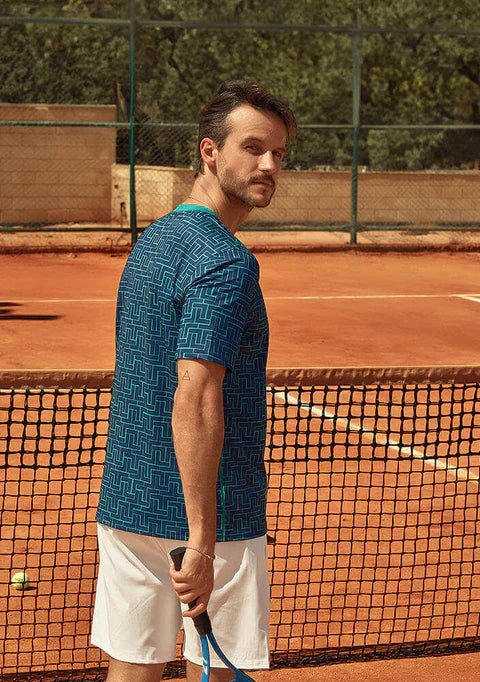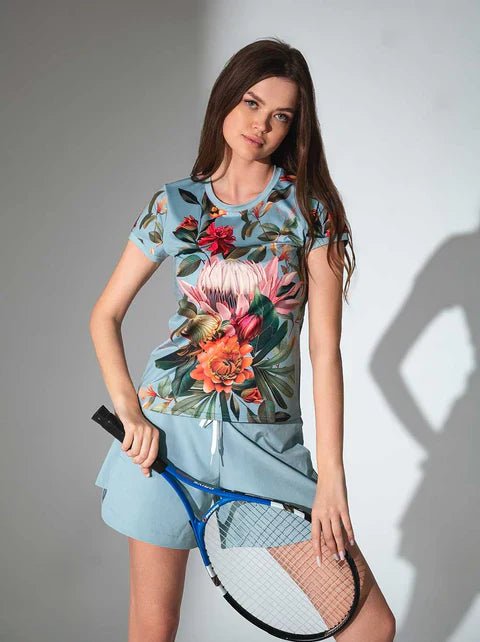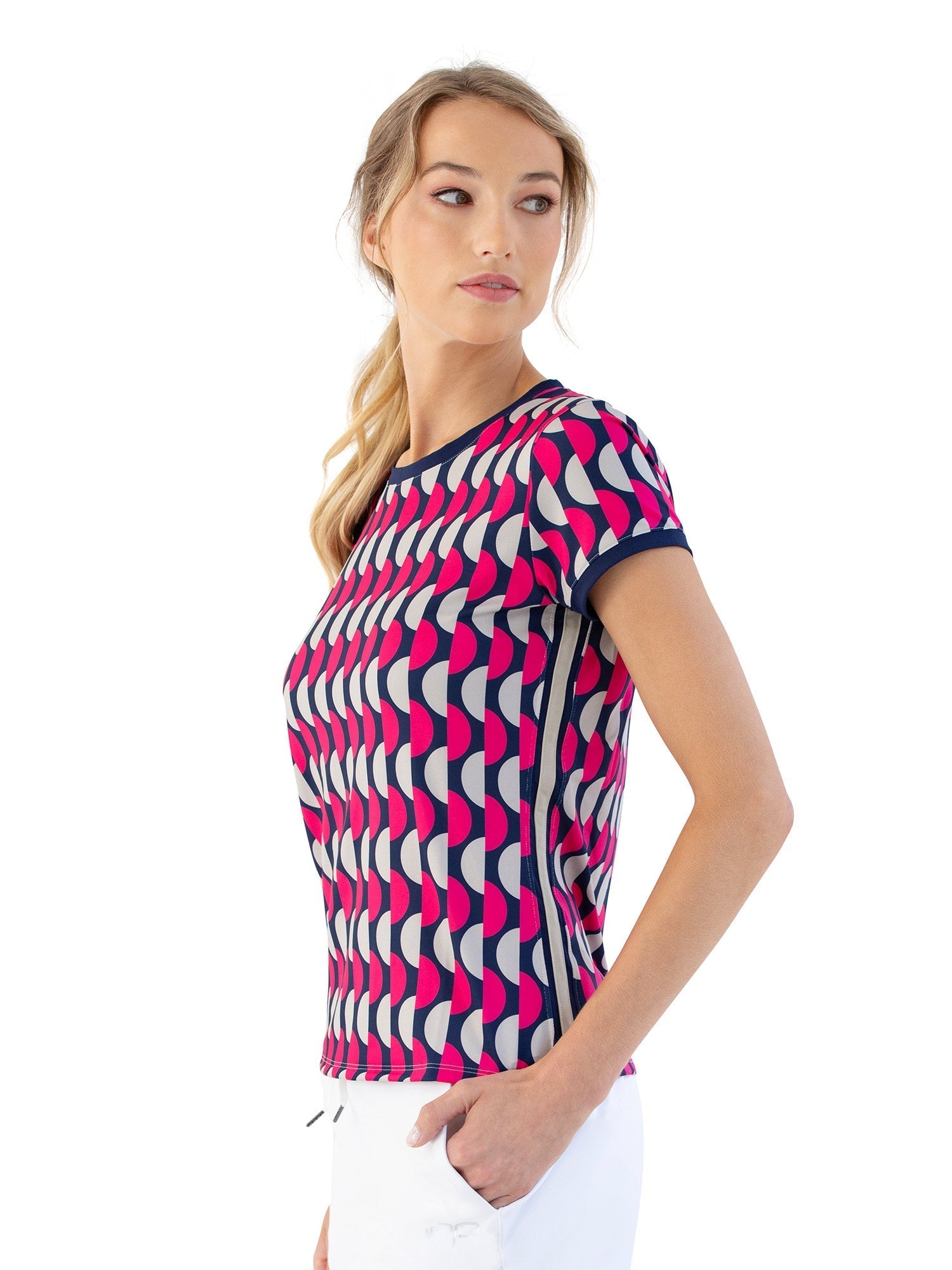Choosing between traditional and sustainable activewear can be confusing. At InPhorm, we understand the importance of informed fashion choices, especially when it impacts your comfort, performance, and the planet.
Whether you’re shopping for new gear from our product collection or researching how to support ethical fashion, this guide will help you navigate both options with confidence.
The Rise of Sustainable Activewear
Sustainable sportswear is no longer a niche. As eco-awareness rises, consumers are looking for clothing that aligns with their values—without sacrificing performance. Traditional activewear has long dominated the market, but the demand for ethical production, biodegradable fabrics, and low-impact processes is reshaping the industry.
Material Differences: Synthetic vs. Sustainable
|
Feature |
Traditional Activewear |
Sustainable Activewear |
|
Common Materials |
Polyester, Nylon, Spandex |
Organic Cotton, Recycled Polyester, TENCEL™ |
|
Resource Usage |
High energy and water consumption |
Reduced water, renewable inputs |
|
Microplastics |
Releases in every wash |
Low or no microplastics depending on fabric |
|
Biodegradability |
Non-biodegradable |
Often biodegradable or recyclable |
InPhorm uses responsibly sourced materials in all collections—ensuring quality without compromising on environmental ethics.
Performance: Do Sustainable Fabrics Deliver?
Traditional materials like spandex and polyester are praised for durability and stretch. However, advances in textile technology have allowed sustainable fabrics to offer equal—sometimes superior—performance benefits:
- Moisture-wicking without harsh chemicals
- Odor resistance from natural fibers like bamboo
- Breathability and comfort from organic cotton blends
- Less risk of skin irritation due to fewer toxins
Check our Inphorm performance line for eco-friendly activewear that works just as hard as you do.
Environmental Impact: Fast Fashion vs. Future Fashion
Traditional sportswear contributes significantly to:
- Carbon emissions
- Water pollution
- Textile waste in landfills
On the other hand, sustainable sportswear:
- Uses low-impact dyes
- Minimizes carbon footprints
- Supports closed-loop systems
- Reduces waste through long-lasting quality
At InPhorm, our mission includes creating garments that leave minimal trace, from production to post-use.
Cost Comparison: Is Sustainable More Expensive?
|
Factor |
Traditional Sportswear |
Sustainable Sportswear |
|
Initial Cost |
Usually lower upfront |
Slightly higher upfront |
|
Longevity |
May wear out quickly |
Designed for longer durability |
|
Total Value |
Short-term use |
Better ROI over time |
While sustainable activewear may appear costly at first, the longer lifespan, better construction, and health benefits make it a more economical choice in the long run.
Ethical Manufacturing: Transparency Matters
Traditional production often involves:
- Low wages
- Unsafe working conditions
- Mass production at high environmental cost
In contrast, sustainable clothing brands like InPhorm prioritize:
- Ethical labor practices
- Transparent sourcing
- Eco-responsible factories
- Support for local communities
We encourage shoppers to explore the ethics behind every purchase.
Consumer Choices: Making the Switch
Modern consumers care about:
- Their personal impact
- Supporting green fashion brands
- Making choices based on performance + purpose
Tips for Transitioning:
- Start by replacing basics (leggings, tops) with eco-versions
- Check labels for certifications (GOTS, OEKO-TEX®, recycled)
- Invest in fewer, better-quality pieces
- Ask brands about their sustainability commitments
With InPhorm, switching to sustainable doesn’t mean giving up style or functionality.
Real Feedback: Consumer Trends and Preferences
Based on recent market studies:
|
Preference |
Percentage (%) |
|
Willing to pay more for eco |
68% |
|
Prefer long-lasting apparel |
73% |
|
Value brand transparency |
81% |
These numbers show how consumer priorities are shifting toward sustainable values. Our collections reflect those changes—without compromise.
Sustainable Packaging and Afterlife
Sustainability doesn’t end at clothing. InPhorm also focuses on:
- Recyclable, minimal packaging
- Carbon-neutral shipping options
- Encouraging garment recycling and resale
Feel free to contact us for more at our support page.
The Verdict: Traditional vs. Sustainable Activewear
|
Category |
Traditional |
Sustainable (InPhorm) |
|
Environmental Impact |
High |
Low |
|
Fabric Comfort |
Varies |
Skin-safe, natural, breathable |
|
Ethics & Labor |
Often unclear |
Transparent and fair |
|
Value Over Time |
Lower |
Higher |
|
Health Risk |
Chemicals present |
Minimal or chemical-free |
|
Packaging |
Plastic-based |
Recyclable, eco-focused |
The shift is clear—sustainable activewear is the future, and brands like InPhorm are leading the way.
Final Thoughts: Choose Better, Wear Smarter
Choosing between traditional and sustainable sportswear is no longer just about price or design. It’s about how your choices shape the environment, economy, and future.
InPhorm gives you access to premium, performance-driven, eco-responsible activewear. Visit our homepage or reach out via our contact page to learn more about our collections.
Elevate your wardrobe with purpose—one workout at a time.
Frequently Asked Questions
Traditional sportswear is typically made from synthetic materials like polyester and nylon, which are petroleum-based and harmful to the environment. These fabrics can take hundreds of years to decompose and often shed microplastics during washes. Sustainable sportswear, like InPhorm s collections, uses organic cotton, bamboo, or recycled materials that have a lower carbon footprint, are biodegradable or recyclable, and produced in eco-conscious facilities.
At first glance, sustainable sportswear may cost more due to eco-friendly materials and ethical labor. However, when you consider the longevity and resilience of the garments, the cost balances out. InPhorm products are designed to last longer, resist wear and tear, and stay stylish beyond seasonal trends. This means fewer replacements, less waste, and better value over time. Additionally, you're supporting responsible business practices and contributing to environmental preservation.
Yes, and sometimes even better. Innovations in eco-textile engineering have allowed sustainable fabrics to match or exceed traditional performance wear. At InPhorm, our sustainable activewear is breathable, moisture-wicking, stretchy, and built for movement. Natural materials like organic cotton and bamboo are gentle on the skin and thermoregulating, while recycled polyesters offer durability and quick-dry features. Our products combine fashion with function, proving that eco-conscious design can support high-impact workouts, yoga sessions, and daily wear.
Every piece of clothing has a story—how it’s made, who made it, and what it impacts. Traditional manufacturing often relies on harmful chemicals, excessive water use, and unethical labor. Choosing sustainable sportswear from brands like InPhorm supports cleaner production, fair wages, and reduced environmental harm. By being a conscious consumer, you take a stand against waste and exploitation. You also protect your health, as eco-friendly fabrics are less likely to irritate your skin.
Authentic sustainable sportswear includes key features: certified fabrics (GOTS, OEKO-TEX®), transparency in sourcing, low-impact dyes, and ethical labor practices. Brands like InPhorm openly share their sustainability goals, material sourcing, and production methods. Check if the product label or website highlights biodegradable or recycled fabrics, minimal packaging, and reuse or repair programs.
More stories

Understanding Sustainable Fabrics in Activewear


